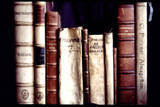 Art is in the eye of the beholder. For a particular piece of Flemish Art, its worst days were among young teens with no developed sense of classic renaissance artworks. The art piece withstood destructive teen amusements of slashing, ripping or pin the tail on the donkey by way of many games of darts. Further indignities to the only scene of the House of Rubens painted by a little known artist, Anton Gunther Gheringh. The Rubens house painted in its full regalia and splendorous glory during the 17th century sustained the most damage during its harsh twentieth century indentured servitude in a British youth detention center. There the masterful painting received further slashes, marks and defacing as if it had started its life as a black velvet glow-in-the-dark painting.
Art is in the eye of the beholder. For a particular piece of Flemish Art, its worst days were among young teens with no developed sense of classic renaissance artworks. The art piece withstood destructive teen amusements of slashing, ripping or pin the tail on the donkey by way of many games of darts. Further indignities to the only scene of the House of Rubens painted by a little known artist, Anton Gunther Gheringh. The Rubens house painted in its full regalia and splendorous glory during the 17th century sustained the most damage during its harsh twentieth century indentured servitude in a British youth detention center. There the masterful painting received further slashes, marks and defacing as if it had started its life as a black velvet glow-in-the-dark painting.Peter Paul Rubens, a master of oils and canvass, has had many biographies and art histories written about him that featured stories about his home. The Rubens house in Antwerp was left to imagination pictorially until the painting's discovery in a small dingy space in an archives. After the massive restoration or tummy tuck surgery for art, the painting was identified and then, there it sat suffering the indignities of a cold storage closet. The National Gallery undertook an extensive history of 8,000 little known works with the discovery emerging as significant as details of the painting and its history became known to the tight knit European art world. That is especially noteworthy as the painting was in desolate shape and real masterful hands had to undertake repairing the extensive damage and abuse the painting had taken. The Ruben House, with its famed prime curb appeal, is a draw as part of a national exhibit entitled, Discoveries: New Research In British Collections.
Such extensive research is significant as an online database is filled with data from small and obscure galleries and art museums throughout Britain. Smaller institutions could not afford to do this type of research and this process uncovered many more of the rich artworks now available for viewing and touring in one place. An 1849 painting is also a beneficiary showcasing, The Barricade at Port St. Dennis, from the Bowes Museum in Durham capturing a portion of the fighting and turmoil in the 1848 French revolution.Rubens, a court painter to Charles I of England, died in 1640. Although Gheringh's picture has been dated to between 1645 and 1675, the three figures by the front door are thought to be Rubens, his wife and daughter. The lavishly painted friezes
and pilasters on the house are believed to have been done by Rubens himself, or at least by his pupils on his instructions.
The house, which has been converted into Rubenshuis, one of Antwerp's most prominent art galleries, fell into disrepair early last century. An attempt to restore it to its former glory had to follow two black and white engravings from the 1660s which showed none of the decoration or colouring.
"Discovering this painting is very, very exciting," said Dr Foister.
"It is not a masterpiece and technically the artist's technique isn't of the highest standard, but historically it is of great significance because here we can see Rubens's designs for the first time. They are very excited at Rubenshuis as well."
 Rubens, a Renaissance master, painted poignant oil portraits from sketches with a depth and detail that stays with you regardless of the beauty or despair of the subject. Drawn by the Brush: Oil Sketches by Peter Paul Rubens explores 40 oil sketches and his point of view in a wonderfully illustrated art book by Peter C. Sutton, Marjorie E. Weisman and contributor Nico van Hout.
Rubens, a Renaissance master, painted poignant oil portraits from sketches with a depth and detail that stays with you regardless of the beauty or despair of the subject. Drawn by the Brush: Oil Sketches by Peter Paul Rubens explores 40 oil sketches and his point of view in a wonderfully illustrated art book by Peter C. Sutton, Marjorie E. Weisman and contributor Nico van Hout.











No comments:
Post a Comment